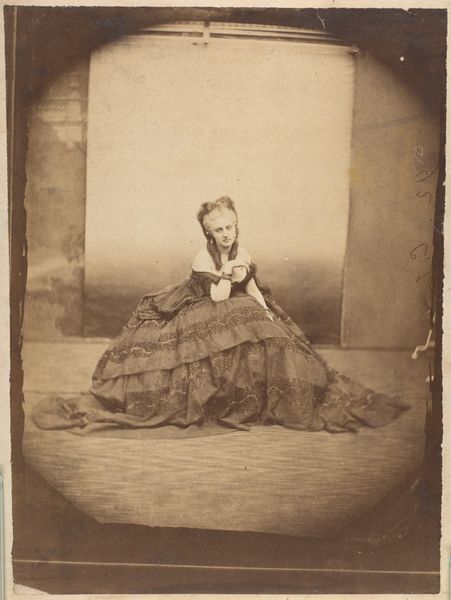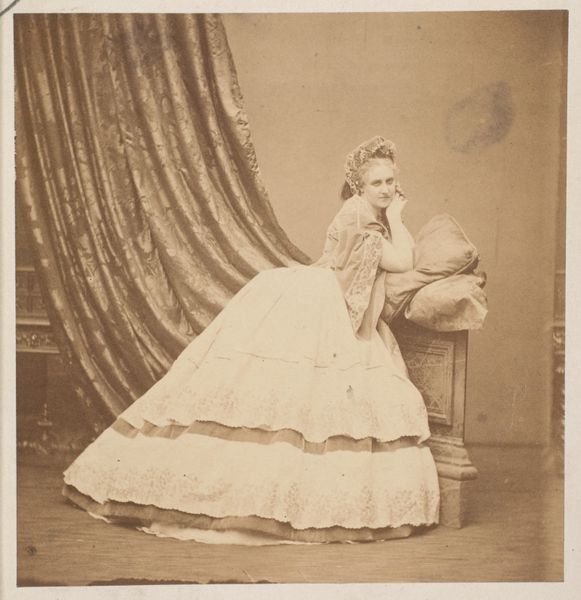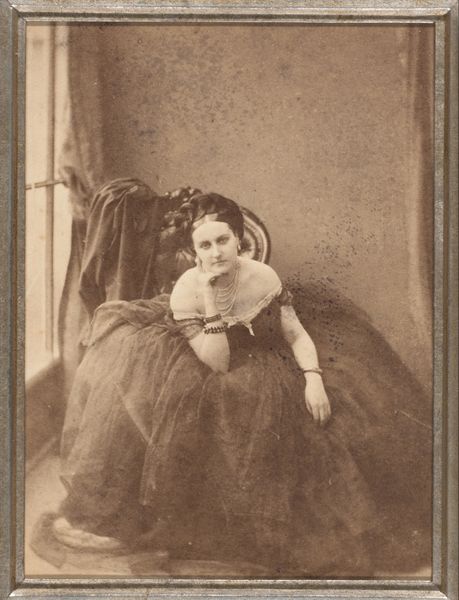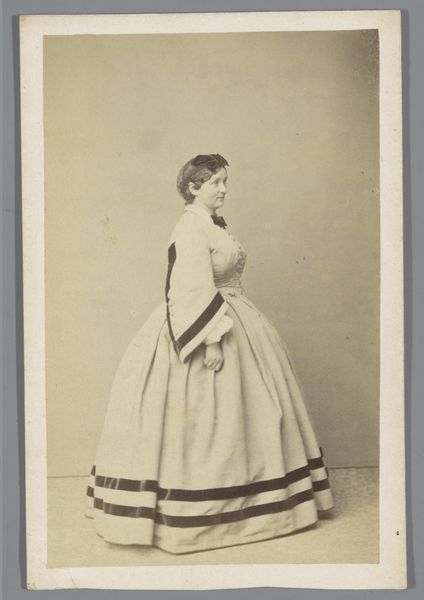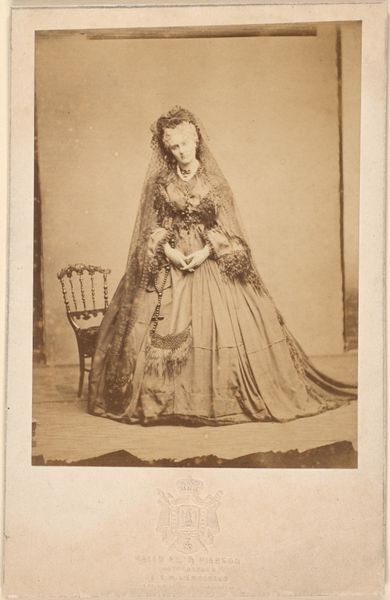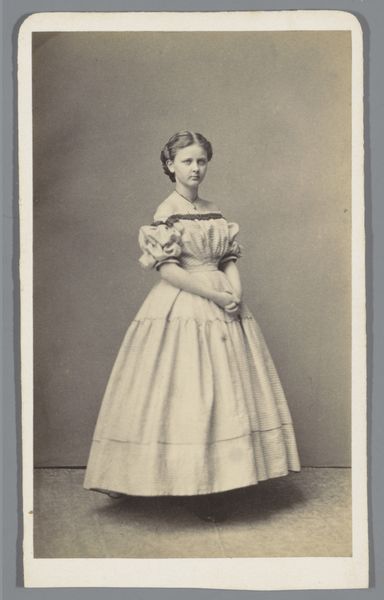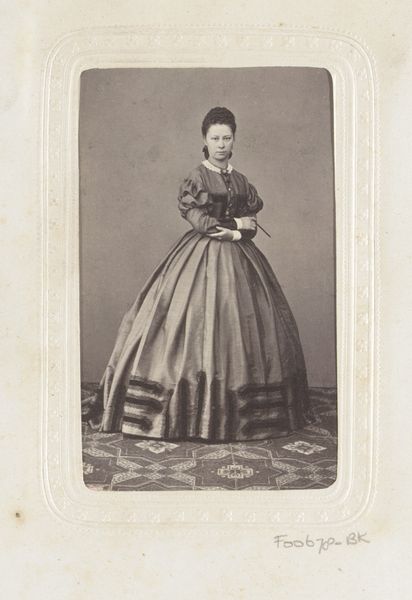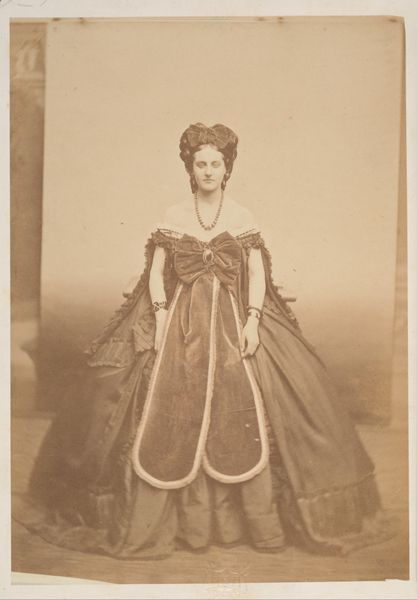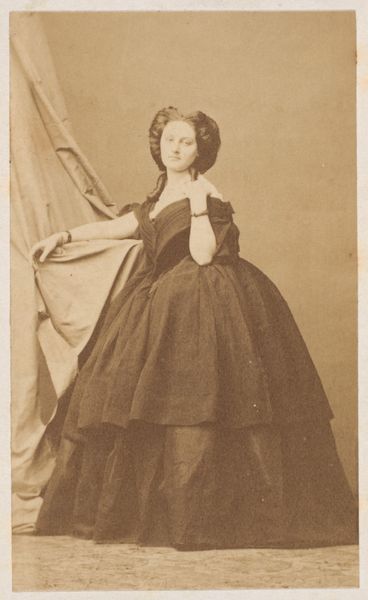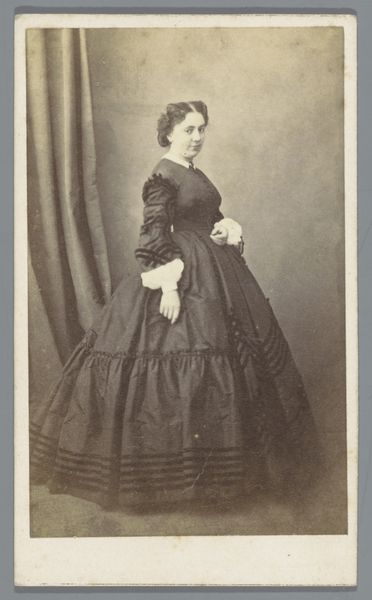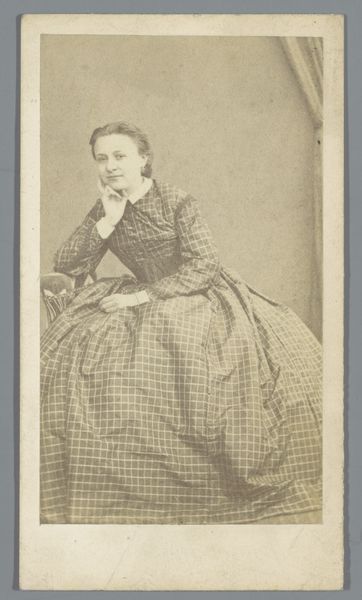
Copyright: Public Domain
Editor: This is "Livetta", a photograph taken by Pierre-Louis Pierson in the 1860s, currently at the Metropolitan Museum of Art. I find it striking, almost theatrical in its presentation. What do you make of it? Curator: Oh, theatrical indeed! I see a carefully constructed fantasy, a glimpse into a world of powdered faces and voluminous skirts. Look at the almost absurd elegance, the pose, the suggestion of drama – she's like a character stepped straight from an opera. The slight blurriness, the sepia tones… it all whispers of a bygone era, doesn't it? Doesn't it evoke a yearning, perhaps a bittersweet memory of something never truly experienced? Editor: It certainly does. Is it typical of photography at the time to be so posed? Curator: That’s a great question! Well, yes and no. Early photography was often very deliberate. Consider the long exposure times! It wasn’t a snap-and-go affair like today. But also, the photographer often took creative liberty as much as possible given those conditions. Did this one imagine “Livetta” or “created” Livetta for us, or for someone else? Editor: I guess, with portraiture there is a sense of co-creation from sitter and photographer. Curator: Precisely! I imagine, it may also hint to social commentaries such as commentary on vanity, or performative identity. And those dresses… each ripple seems to tell a tale! It’s as if Pierson captured not just a likeness, but a mood, an atmosphere… the very essence of romantic longing. Editor: It's definitely more layered than I initially perceived. Thanks, it makes me appreciate the artwork so much more now. Curator: It has also enriched my viewpoint as well, in having me rethink our perspective on photographic collaboration.
Comments
No comments
Be the first to comment and join the conversation on the ultimate creative platform.
